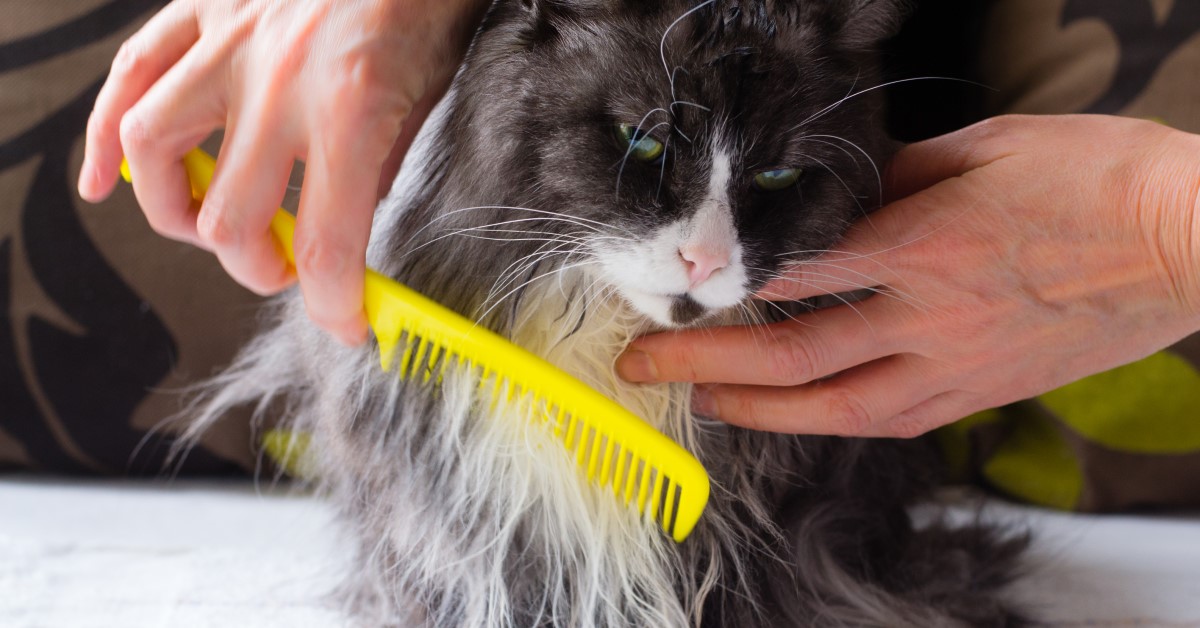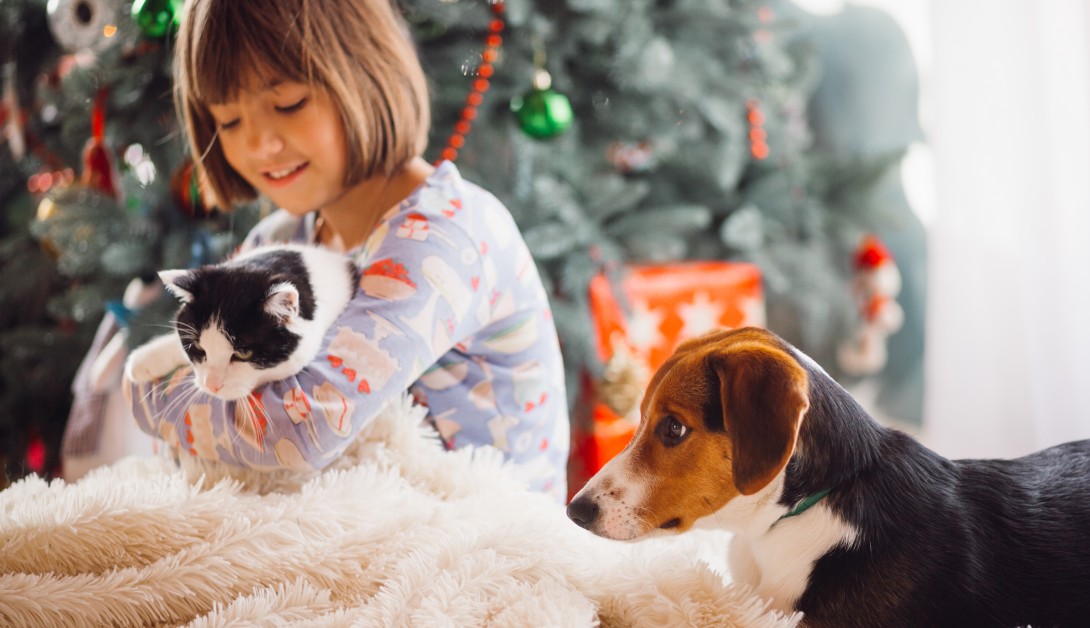Tips for Grooming Long-Haired Cats
How to keep your cat’s long hair in check with regular grooming and attention.

If you own a Maine Coon, Persian, Ragdoll, American Curl, Balinese, Norwegian Forest, or Turkish Angora Cat, you know how soft and luxurious the long, thick coats of these breeds can be. You may also know first-hand how much trouble those fluffy coats can cause. Take a moment to study these tips on how to groom your long-haired cat safely and effectively.
The Furry World of Long-Haired Cats
Long-haired cats actually rotate between two different types of coats from one time of year to the next. During the colder seasons, they grow an especially thick, multilayered coat, with an undercoat that provides extra insulation beneath the long, silky top coat. As the weather warms up, your long-haired cat sheds the extra fur in favor of a lighter, single-layered coat. This "summer wardrobe" offers greater comfort and helps your cat stay cool while still protecting its sensitive skin from ultraviolet rays.
All this hair can create trouble for your cat's looks, comfort, and health -- not to mention your upholstery. Shedding occurs all year round, aided by your cat's personal grooming practice of licking loose hairs away. These lumps of hair can easily turn into hairballs in your cat's stomach. The hair that remains in the coat can also get easily matted and tangled. Whenever anything tugs on these mats and tangles, your cat can suffer pain and skin damage.
How to Perform Regular Light Grooming for Your Cat
Keeping up on regular light grooming can help you and your cat avoid these complications. Light grooming mostly consists of combing and brushing your cat's hair once a week. However, even these simple tasks must be done correctly. Observe the following best practices:
- Use a metal comb instead of a plastic one, since plastic can collect static electricity and impart a shock to your cat's skin.
- Choose a moment when your cat feels relaxed and calm. If your cat squirms or fidgets, it might sustain an injury during the grooming process.
- Groom your cat's underside by approaching it from below instead of turning your cat belly-up (a position that can make cats nervous or uncomfortable).
- Take special care around the ears, groin, or underarms to avoid irritating the skin in these spots. You can apply a bit of powder to prevent chafing.
- Make a point of trimming the hair around your cat's bottom as part of the combing and brushing sessions. Even the cleanest cats can suffer from accumulations of fecal matter in this region.
Dealing With Special Grooming Challenges and Concerns
Contrary to what you might assume, you shouldn't bathe your long-haired cat frequently. Cats bathe themselves well enough with their tongues. An extremely dirty cat can (and should) receive a bath from a professional groomer who has access to the right shampoos and other products. Even for relatively clean cats, a professional bath every couple of months will do your kitty no harm. However, more frequent bathing can dry out the skin, making it more vulnerable to cracking, irritation, and infection.
Cats With Matted Fur
If your cat's hair contains mats, proceed with caution. Mats tend to form close to the skin and then move outward as the hair grows. You can snip small, surface-level mats with blunted scissors as long as your cat remains still. (Don't try this with a jumpy feline!) Deeper, more severe mats can prove extremely challenging for a non-expert to remove without causing skin damage. Let a veterinarian or professional groomer tackle the advanced cases.
Use an Experienced Groomer for Baths
Cats often enjoy combing and brushing as a kind of soothing massage. But they don't like baths, either at home or at a grooming facility. You can facilitate this change in their routine by bringing them to the same professional groomer every time. An experienced groomer will know how to put your cat at ease, and your cat will come to know and trust the groomer from one bath to the next.
Shave and a Haircut
A partial or full shave might prove necessary for some long-haired felines. For instance, you might choose this option if your cat can’t groom itself easily due to age or physical limitations. A coat full of tight, deep-set mats may also make a shave mandatory as the only way to solve the problem without hurting your kitty.
A professional groomer can prove invaluable in these situations by giving your cat a stylish new hairdo using advanced tools and techniques. Ask your veterinarian whether your cat can benefit from a shave before taking this route.
Once your shaved cat has grown new hair, take it as your cue to adopt a regular combing and brushing routine early on. This proactive approach may help you avoid another trip to the feline "barber." You can also nurture healthy growth of new hair by feeding your cat a food designed to provide the right nutritional balance.
Help Your Long-Haired Kitty Stay Happy and Healthy
Long-haired cats can look stunningly beautiful as long as you take the necessary steps to keep that hair under control. If you have any questions or concerns about your long-haired cat's grooming or nutritional needs, schedule a wellness exam or other consultation with your veterinarian. The right combination of home grooming and professional care can ensure a happy, healthy life for your furry family member.
Ready to start saving money on pet wellness care?
Then take a look at Mint Wellness, the pet wellness plan that provides fast reimbursement on routine pet care. Save on vaccinations, wellness exams, preventatives, dental, and more!
Learn More


